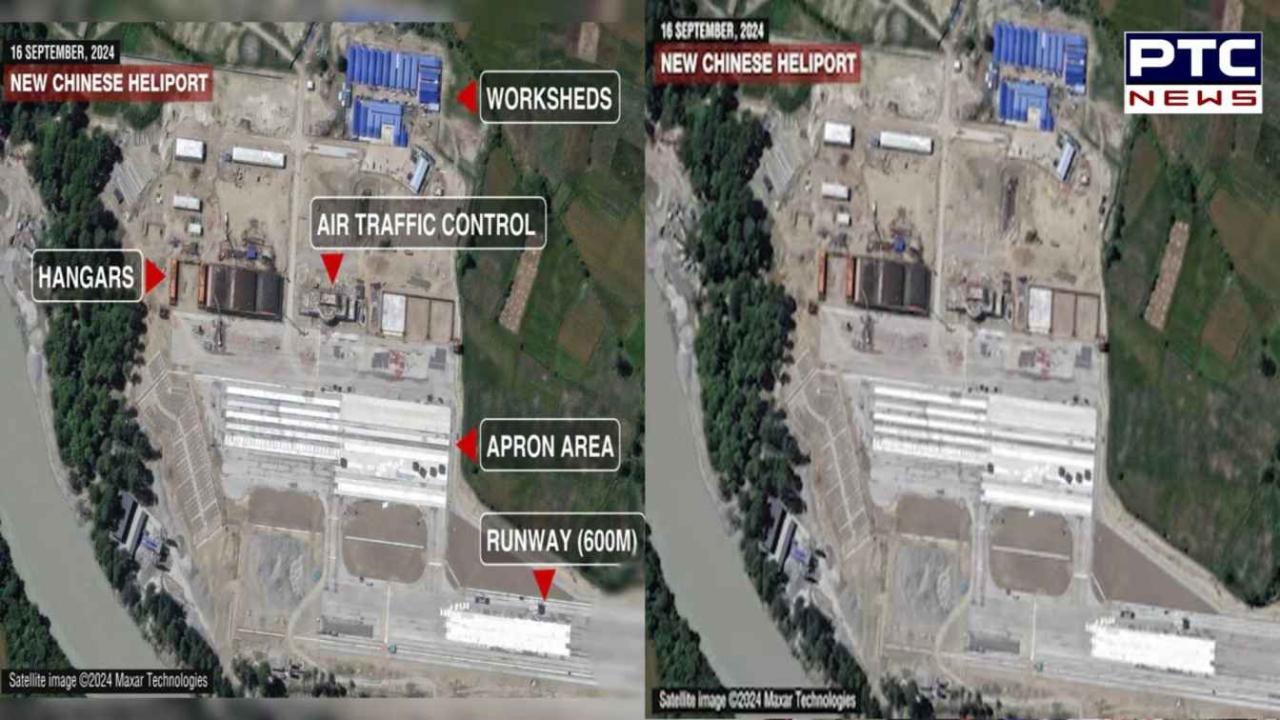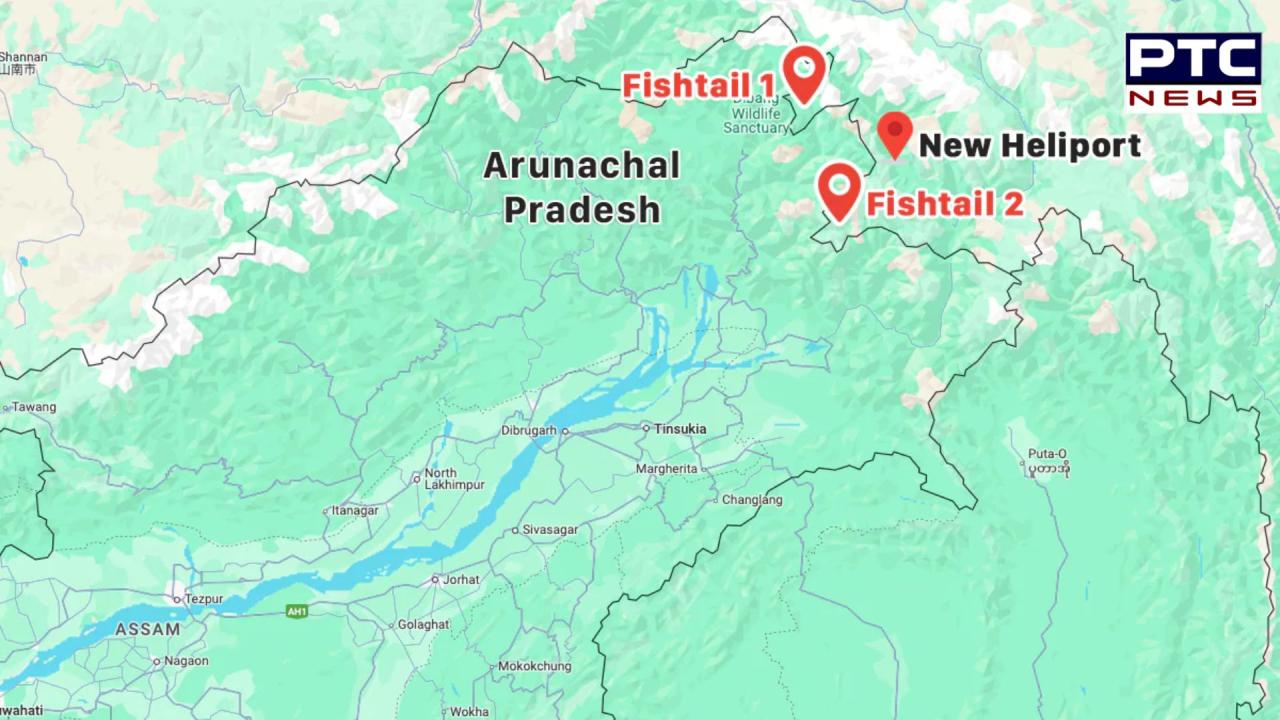

China's new heliport heightens tensions along eastern Arunachal border
PTC News Desk: China is constructing a new heliport just 20 kilometers east of the Line of Actual Control (LAC) near the sensitive 'Fishtails' region in Arunachal Pradesh, raising concerns over potential military activity in the remote area. Located along the Gongrigabu Qu river in Nyingchi Prefecture, Tibet Autonomous Region, the heliport could significantly enhance the ability of the Chinese military to move troops and resources quickly to the underdeveloped frontier with India.
Satellite imagery from EOS Data Analytics shows that no construction existed at the site as of December 1, 2023. However, images from December 31 indicate land clearing, and more recent images from September 16, 2024, show the heliport in an advanced state of construction.

Damien Symon, a geospatial intelligence expert, highlighted that the new heliport will allow the People’s Liberation Army (PLA) to ramp up intelligence, surveillance, reconnaissance, and troop deployment in the densely forested, mountainous region.
Indian military sources confirm that the heliport is indeed military infrastructure and could also serve dual purposes, such as civilian movement. The facility, which includes a 600-meter runway, hangars, an apron area for helicopters, and an air traffic control building, significantly boosts China's ability to respond to contingencies and conduct both defensive and offensive operations in the area.
The 'Fishtails' region, named after the boundary-line shape in the area, is a sensitive zone where India and China have differing perceptions of the LAC. Lt General Pravin Bakshi (retired), former head of the Indian Army's Eastern Command, expressed concerns about the heliport's potential to aid Chinese "grey-zone warfare," a strategy that falls short of conventional war but involves coercive actions to alter territorial realities.
China’s heliport construction coincides with the creation of 'Xiaokang' or dual-use villages along the border with India. These villages, part of China’s long-term strategy to assert territorial claims, have led to what late Chief of Defence Staff General Bipin Rawat termed "salami slicing," wherein small portions of disputed land are gradually taken over. This has been notably visible in Bhutan, where China has occupied areas, including ancestral lands of the royal family, and built townships connected by extensive road networks.
Brahma Chellaney, a strategic affairs expert, noted that China’s construction of new infrastructure along the LAC has changed the military dynamics in the region since the 2020 clashes in Ladakh, raising concerns about what can be achieved through diplomatic efforts.
In response to China's actions, India has initiated its 'Vibrant Villages' development project, aimed at improving infrastructure in 3,000 villages in border areas, including Arunachal Pradesh. The government has allocated Rs 4,800 crore for the first phase of the project, along with the construction of a 2,400-kilometer trans-Arunachal highway, which will reduce travel time and improve connectivity to Army posts in Eastern Arunachal Pradesh.
Lt General Bakshi added that while India is making progress in countering China's border strategy, the eastern region of Arunachal Pradesh remains underdeveloped compared to other areas, which could give China a strategic advantage through its new heliport.
Also Read: Hezbollah accuses Israel after pager explosions in Lebanon kill 8 and injure 2,750
- With inputs from agencies
